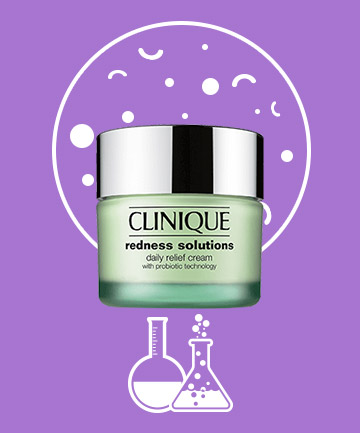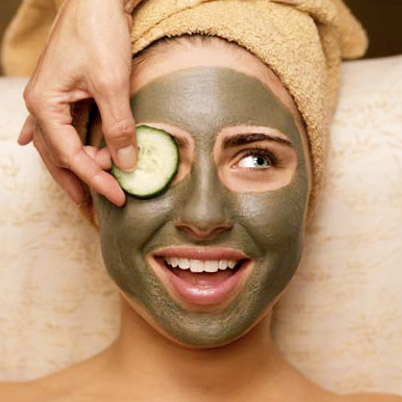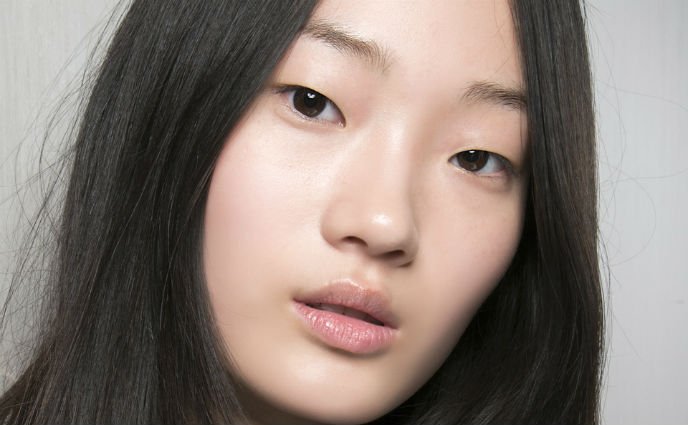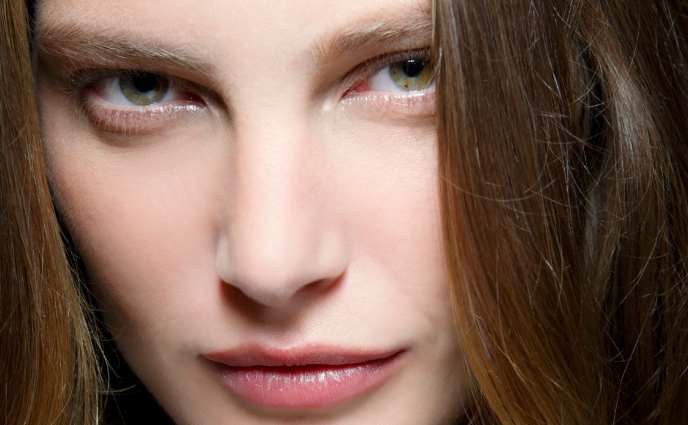You've probably overheard one of your skin care-obsessed pals exalting the wonders of using yogurt as a DIY facial. Maybe your instinct was to call B.S. But recently, research has found that there are actually compelling benefits to the "good bacteria" in yogurt -- beyond what it can do for your insides.
It's well known -- among us health nuts anyway -- that good bacteria, aka probiotics, help fight inflammation in the gut. (That's why we've been chugging all that Chobani.) But new studies indicate that when used in the form of creams, cleansers and masks, probiotics may do something similar for our skin.
When applied topically, probiotics combat the "bad bacteria" living in your skin's ecosystem, says Dr. Craig Kraffert, MD, Amarte Skin Care Dermatologist. Left unattended, bad bacteria may trigger inflammation, causing (and exacerbating) acne, rosacea and eczema. For those suffering from such conditions, probiotics can act as a mini skin-care army.
What some find even more interesting is recent evidence showing probiotics' ability to turn back the clock. "Probiotics have been proven to increase collagen and protein production, as well as improve oxygen intake," says Dr. Neal Kitchen, PhD, a member of the Scientific Board of Advisors for HydroPeptide. "This means more sufficient cell renewal and skin healing." Probiotics also create "a protective shield on the skin's surface, which helps to prevent free radical and environmental damage to stave off skin-aging aggressors." Sound too good to be true?
To be honest, we aren't totally sure it isn't. Read the fine print, and you'll see that most of these products contain probiotic derivatives, as opposed to the active cultures found in yogurt, as it would be difficult to guarantee the shelf life of live bacteria. "Skin care companies are thus exploring formulations with neutralized -- aka, dead -- bacteria," Kraffert explains. "Live bacteria offer more theoretical benefits, as they can interact in real time with resident bacteria and actively secrete beneficial compounds." But Kraffert says neutralized probiotics can still provide real benefits. "How well they work exactly is still an open question," he qualifies.
Game to help find the answer? If you're a skin-care aficionado, science geek, disgruntled rosacea-sufferer or all of the above, give one of these cutting-edge probiotic treatments a try.
It's well known -- among us health nuts anyway -- that good bacteria, aka probiotics, help fight inflammation in the gut. (That's why we've been chugging all that Chobani.) But new studies indicate that when used in the form of creams, cleansers and masks, probiotics may do something similar for our skin.
When applied topically, probiotics combat the "bad bacteria" living in your skin's ecosystem, says Dr. Craig Kraffert, MD, Amarte Skin Care Dermatologist. Left unattended, bad bacteria may trigger inflammation, causing (and exacerbating) acne, rosacea and eczema. For those suffering from such conditions, probiotics can act as a mini skin-care army.
What some find even more interesting is recent evidence showing probiotics' ability to turn back the clock. "Probiotics have been proven to increase collagen and protein production, as well as improve oxygen intake," says Dr. Neal Kitchen, PhD, a member of the Scientific Board of Advisors for HydroPeptide. "This means more sufficient cell renewal and skin healing." Probiotics also create "a protective shield on the skin's surface, which helps to prevent free radical and environmental damage to stave off skin-aging aggressors." Sound too good to be true?
To be honest, we aren't totally sure it isn't. Read the fine print, and you'll see that most of these products contain probiotic derivatives, as opposed to the active cultures found in yogurt, as it would be difficult to guarantee the shelf life of live bacteria. "Skin care companies are thus exploring formulations with neutralized -- aka, dead -- bacteria," Kraffert explains. "Live bacteria offer more theoretical benefits, as they can interact in real time with resident bacteria and actively secrete beneficial compounds." But Kraffert says neutralized probiotics can still provide real benefits. "How well they work exactly is still an open question," he qualifies.
Game to help find the answer? If you're a skin-care aficionado, science geek, disgruntled rosacea-sufferer or all of the above, give one of these cutting-edge probiotic treatments a try.
What it is: Bioelements Probiotic Anti-Aging Serum, $69
What it does: This probiotic-packed serum rallies the good-bacteria troops to form a protective barrier on your skin's surface. This helps deflect external stressors, allowing your skin to remain as uncorrupted as an 18-year-old's for as long as possible.
Anti-aging elements, like soy and rice milk proteins, add an extra dose of nourishment and hydration. Pat a thin layer onto your face and neck before bed before bed between cleansing and moisturizing to give the formula a full night to kick into gear.
Buy it Now
What it does: This probiotic-packed serum rallies the good-bacteria troops to form a protective barrier on your skin's surface. This helps deflect external stressors, allowing your skin to remain as uncorrupted as an 18-year-old's for as long as possible.
Anti-aging elements, like soy and rice milk proteins, add an extra dose of nourishment and hydration. Pat a thin layer onto your face and neck before bed before bed between cleansing and moisturizing to give the formula a full night to kick into gear.
Buy it Now
What it is: Clinique Redness Solutions Daily Relief Cream With Probiotic Technology, $48
What it does: Formulated to fight inflammation and future skin flare-ups, this oil-free moisturizer is still gentle enough for supersensitive skin.
Slather it over clean skin morning and night to calm redness and rosacea. Additional skin-care goodies (think: moisturizing shea butter and glycerin), as well as rosacea- and free radical-fighting green tea, serve as backup.
Buy it Now
What it does: Formulated to fight inflammation and future skin flare-ups, this oil-free moisturizer is still gentle enough for supersensitive skin.
Slather it over clean skin morning and night to calm redness and rosacea. Additional skin-care goodies (think: moisturizing shea butter and glycerin), as well as rosacea- and free radical-fighting green tea, serve as backup.
Buy it Now
What it is: Tula Exfoliating Treatment Mask, $54
What it does: Nothing announces your age to the world quite like rough, lackluster skin. This clay mask aims to make dull, lackluster skin a thing of the past by using both chemical and physical exfoliation, as well as probiotics, to resurface uneven skin tone and texture, leaving you with a radiant complexion.
"We use a patented probiotic technology and other nutritious ingredients to protect, strengthen and nourish the skin," says Dr. Roshini Raj, MD, creator of TULA Probiotic Skin Care. "We like to say that our products are like a healthy smoothie for your skin." (A yogurt-based smoothie, to be exact.)
Use this mask for five minutes a day, two to three times a week, before rinsing with cool water. Lactic acid exfoliates, while Bentonite Clay and microbeads made from soybean oil, volcanic sand and Vitamin E physically polish and hydrate skin. The result? Major glowiness.
Buy it Now
What it does: Nothing announces your age to the world quite like rough, lackluster skin. This clay mask aims to make dull, lackluster skin a thing of the past by using both chemical and physical exfoliation, as well as probiotics, to resurface uneven skin tone and texture, leaving you with a radiant complexion.
"We use a patented probiotic technology and other nutritious ingredients to protect, strengthen and nourish the skin," says Dr. Roshini Raj, MD, creator of TULA Probiotic Skin Care. "We like to say that our products are like a healthy smoothie for your skin." (A yogurt-based smoothie, to be exact.)
Use this mask for five minutes a day, two to three times a week, before rinsing with cool water. Lactic acid exfoliates, while Bentonite Clay and microbeads made from soybean oil, volcanic sand and Vitamin E physically polish and hydrate skin. The result? Major glowiness.
Buy it Now
What it is: LJH Probiotics Sleeping Cream, $48
What it does: Formulated with 50 percent probiotic extracts, this stuff is all about harnessing as much good bacteria as possible to neutralize free radical activity and control excess sebum on skin, which prevents enlarged pores and minimizes oil production.
The Korean-made sleeping mask is ultra-lightweight -- perfect for those prone to greasy skin and breakouts. Apply a thin layer before bed and rinse in the morning to reveal a luminous, healthy complexion.
Buy it Now
What it does: Formulated with 50 percent probiotic extracts, this stuff is all about harnessing as much good bacteria as possible to neutralize free radical activity and control excess sebum on skin, which prevents enlarged pores and minimizes oil production.
The Korean-made sleeping mask is ultra-lightweight -- perfect for those prone to greasy skin and breakouts. Apply a thin layer before bed and rinse in the morning to reveal a luminous, healthy complexion.
Buy it Now









